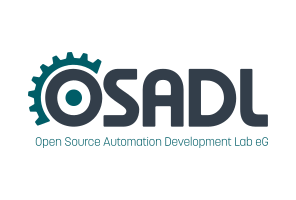Dates and Events:
|
OSADL Articles:
2023-11-12 12:00
Open Source License Obligations Checklists even better nowImport the checklists to other tools, create context diffs and merged lists
2022-07-11 12:00
Call for participation in phase #4 of Open Source OPC UA open62541 support projectLetter of Intent fulfills wish list from recent survey
2022-01-13 12:00
Phase #3 of OSADL project on OPC UA PubSub over TSN successfully completedAnother important milestone on the way to interoperable Open Source real-time Ethernet has been reached
2021-02-09 12:00
Open Source OPC UA PubSub over TSN project phase #3 launchedLetter of Intent with call for participation is now available |
Real Time Linux Workshops
1999 - 2000 - 2001 - 2002 - 2003 - 2004 - 2005 - 2006 - 2007 - 2008 - 2009 - 2010 - 2011 - 2012 - 2013 - 2014 - 2015
Eleventh Real-Time Linux Workshop on September 28 to 30, in Dresden, Germany
Announcement - Hotels - Agenda - Paper Abstracts - Presentations - Registration - Abstract Submission - Xenomai User Meeting - Sponsors
Papers
Efficient embedded software development using QEMU
Pradyumna Sampath, ABB Corporate Research, Bangalore
Rachana Rao, ABB Corporate Research, Bangalore
Software based processor emulators have been around for a long time and predominantly used by developers of Operating Systems. With virtualization technology becoming more common and gaining in-processor support, these emulators have expanded to support several processor architectures and a richer feature set. Consequently, popular operating systems such as Linux have been adapted to run within virtual environments seamlessly. As part of the software development process, this virtualization technology has huge potential to increase product quality and developer efficiency.
This paper looks at employing virtualization for in-house real-time application software development through QEMU, a popular open source emulator. It also details the process of establishing such an environment and looks at some of the advantages of such a development model for embedded systems.




